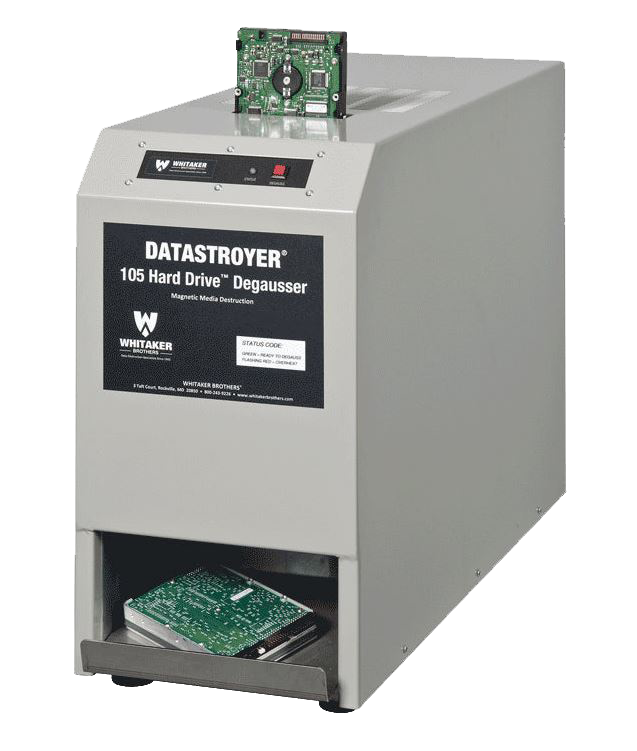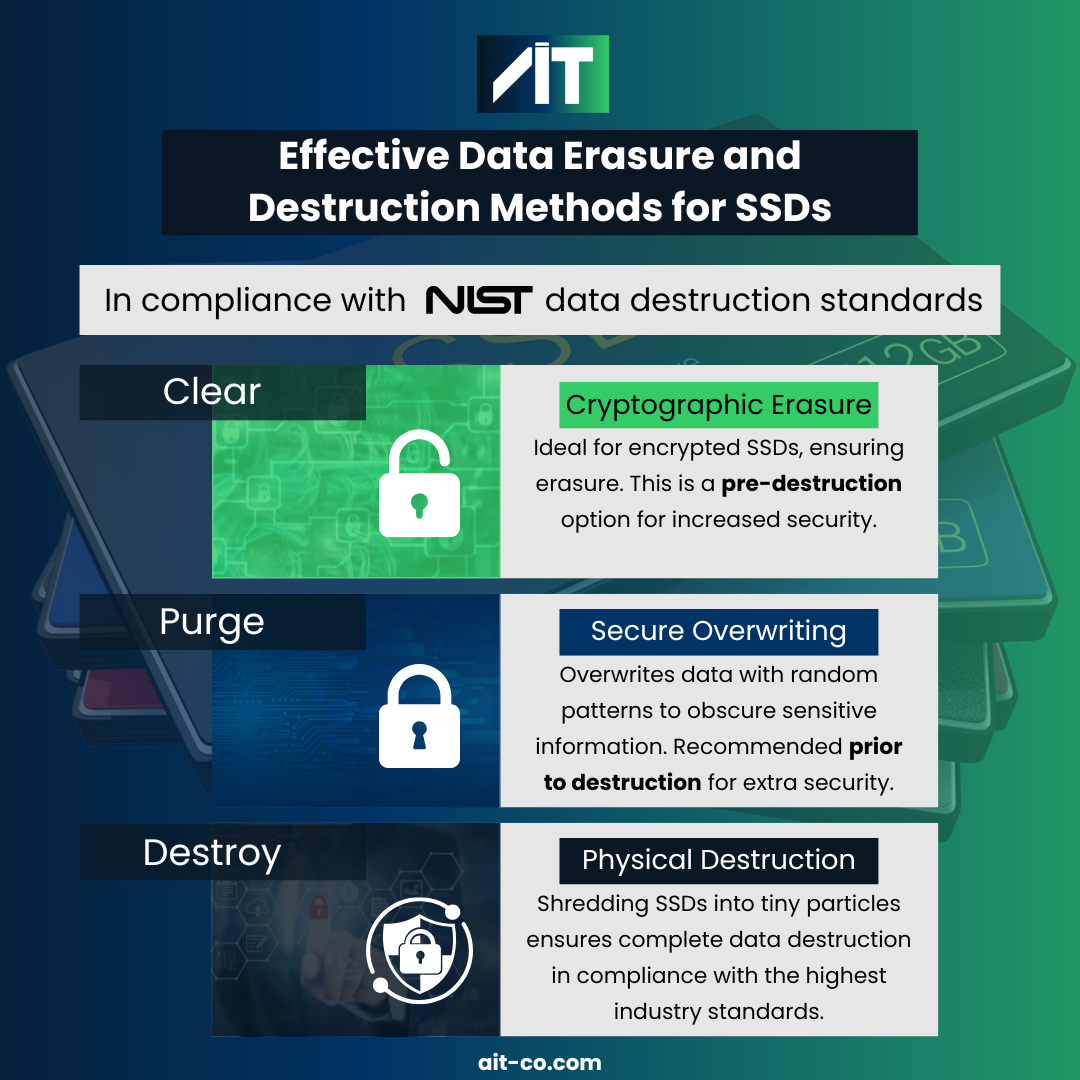Your organization just retired a batch of solid-state drives containing sensitive financial records. The IT team suggests degaussing – the same magnetic erasure method that’s worked reliably on hard drives for decades. But here’s the problem: you might as well be trying to erase a smartphone with a refrigerator magnet.
Understanding why degaussing fails on SSDs requires examining how these storage technologies actually work – it could mean the difference between genuine data security and a false sense of protection that leaves your organization vulnerable to data breaches.
How Degaussing Technology Works
Degaussing employs powerful electromagnetic fields to disrupt the magnetic domains on storage devices. Industrial degaussers generate magnetic fields thousands of times stronger than household magnet, typically ranging from 4,000 to 20,000 gauss or higher.
The process works by randomizing the magnetic alignment of particles that store data on traditional magnetic media. When exposed to these intense magnetic fields, the organized pattern of magnetic domains becomes scrambled, making bits of previously stored information unrecoverable.
For magnetic storage devices, degaussing offers several advantages. The process is relatively quick, doesn’t require physical dismantling, and is a great pre-destruction practice in compliance with NIST SP 800-88.
SSDs vs HDDs: Fundamental Storage Differences
The critical difference lies in how these technologies store information. Traditional hard disk drives (HDDs) use magnetic storage, with data existing as patterns of magnetized particles on spinning platters. These magnetic domains can be disrupted and randomized through degaussing.
Solid-state drives operate on completely different principles. SSDs store data in NAND flash memory cells using electrical charges trapped in floating gate transistors. No magnetic storage occurs in this process. Instead of magnetic domains, SSDs rely on the presence or absence of electrical charge to represent data.
This fundamental distinction extends to data organization as well. HDDs write data sequentially to specific physical locations, while SSDs use sophisticated controllers that distribute data across multiple memory cells for wear leveling and performance optimization.
| Feature | HDD (Hard Disk Drive) | SSD (Solid-State Drive) |
|---|---|---|
| Storage Principle | Magnetic storage: data as magnetized patterns on spinning platters | Electrical storage: data as electrical charges in NAND flash cells |
| Data Organization | Sequential writing to physical locations | Data distributed across multiple cells via advanced controllers |
| Degaussing Effectiveness | Highly effective—magnetic fields can erase data by disrupting magnetic domains | Not effective—no magnetic storage; electrical charges are unaffected |

Does Degaussing Work on SSDs?
No, degaussing does not work on solid-state drives. Since SSDs store data using electrical charges rather than magnetic fields, even the most powerful degaussing equipment cannot affect the information stored in NAND flash memory cells.
The electromagnetic fields that successfully scramble magnetic storage have no impact on the electrical charge states that represent data in SSDs. The floating gate transistors that store information in solid-state drives remain unaffected by magnetic fields, regardless of their intensity.
This limitation extends beyond consumer SSDs to enterprise-grade drives, NVMe devices, and other flash-based storage technologies. The storage mechanism itself – electrical rather than magnetic – makes degaussing fundamentally incompatible with solid-state technology.
Organizations that rely solely on degaussing for SSD destruction may face serious compliance violations. Regulatory standards like GDPR, HIPAA, and SOX require verified data destruction, not just the application of traditional methods that may no longer be effective.
Effective Data Destruction Methods for SSDs

Cryptographic Erasure
For encrypted SSDs, cryptographic wiping offers an efficient solution. This method securely deletes encryption keys, making data unreadable even if it physically remains on the drive. The process is faster than traditional wiping, but it is considered an extra safety method and pre-destruction measure because it does not ensure that your data is completely gone from the device.
Secure Overwriting
Software-based overwriting replaces existing data with random patterns multiple times. However, SSD wear leveling and over-provisioning can complicate this process, as the drive controller may not overwrite all memory cells containing sensitive data.This is another layer of security that can be added onto physical destruction services for any sensitive data.
Physical Destruction
Physical shredding provides the most reliable method for SSD data destruction. Industrial shredders reduce solid-state drives to particles smaller than 2mm, making data recovery impossible. This approach works for all SSD types and provides visual confirmation of destruction.AIT’s certified data destruction services will always come with a Certificate of Destruction and chain-of-custody documentation required for regulatory compliance.
Secure Your SSD Data with Proven Methods
Degaussing simply cannot destroy data on solid-state drives due to fundamental differences in storage technology. Organizations continuing to use magnetic degaussing for SSDs remain vulnerable to data breaches and compliance violations.
Effective SSD destruction requires methods specifically designed for flash memory technology – cryptographic erasure for encrypted drives, verified overwriting for unencrypted devices, and physical destruction for maximum security. Working with certified data destruction providers like AIT ensures your organization uses appropriate methods while maintaining the documentation necessary for regulatory compliance.Don’t let outdated destruction methods compromise your data security. Click here to start destroying your data today or read more about how to certify data destruction here.